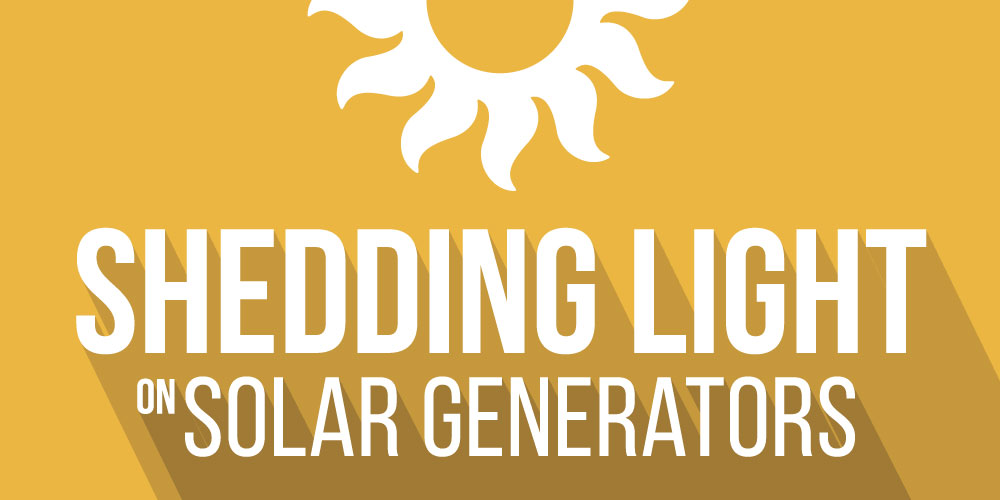
I get asked a lot about solar generators when people find out I’ve been off the grid full time since 2013. People want to know if a portable solar generator will work for their needs, how to find the best solar powered generator, and how to determine the wattage and size needed. There is a lot of confusing information out there and the fast pace of solar innovation makes it hard to keep up with.
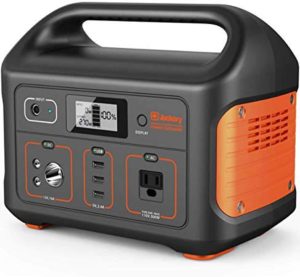 Usually, the people drawn to portable solar generators are beginners in the solar world. It’s often the guy who lives in a typical house, but who would like to start dabbling in solar power. He might have a goal to live in a tiny house someday, or even to purchase a full solar panel system to power his regular-sized home.
Usually, the people drawn to portable solar generators are beginners in the solar world. It’s often the guy who lives in a typical house, but who would like to start dabbling in solar power. He might have a goal to live in a tiny house someday, or even to purchase a full solar panel system to power his regular-sized home.
It’s important to note the term “solar generator” is a bit of a misnomer. Usually, what people are referring to is a power pack with solar panels. It’s either a setup you can piece together yourself or purchase off the shelf. These are low-power units. They can also get expensive since they’re a turnkey solution, but they’re an excellent way to dip a toe in the world of solar.
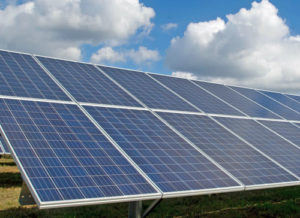 Switching to solar panels completely, without experience, is quite a daunting task (especially if you’re trying to power a typical-sized home). It’s also a significant investment, which I’m all too aware of after writing a $19,000 check for my solar panel system for my tiny house. But after getting over the initial pain of paying so much money for my system, it’s definitely worth it. In fact, it’s hard to describe how awesome it is–I literally haven’t paid a power bill for years! Not to mention that 55% of my system was eligible for a tax credit.
Switching to solar panels completely, without experience, is quite a daunting task (especially if you’re trying to power a typical-sized home). It’s also a significant investment, which I’m all too aware of after writing a $19,000 check for my solar panel system for my tiny house. But after getting over the initial pain of paying so much money for my system, it’s definitely worth it. In fact, it’s hard to describe how awesome it is–I literally haven’t paid a power bill for years! Not to mention that 55% of my system was eligible for a tax credit.
That’s why solar powered generators are a nice way to explore the world of solar without a huge commitment or undertaking. Most of the people asking about solar generators possess a DIY outlook. They’re often wondering if solar is something they can set up on their own. If they purchase a Harbor Freight kit, can they build a small solar power system themselves?
So, are solar generators really worth the investment? Here’s what you need to know before you spend the money on a portable solar generator.
Managing Expectations About Solar Generators

My biggest piece of advice to anyone exploring solar generators or solar power, in general, is to keep your expectations realistic. Now, I’ve been on solar power for years, and I really like my system. That said, it was a lot of work and a big investment to set up. There are also limitations.
With a solar panel system, there will be adjustments to your lifestyle that is required when you go off the grid:
- Bad Weather – if it’s cloudy for a week straight, you might be reaching for a blanket as your battery wanes.
- Snow – Are you ready to get out and clean snow off your panels in a blizzard?
- Something breaks – there is no power company to call, if your power goes out, it’s up to you.
- Maintenance – Batteries to fill, terminals to clean, fuses to change, and panels to clean.
Before you go fully solar, a portable solar generator is an excellent gateway option. It allows you to explore the fundamentals of solar power generation and to understand how the larger systems work. It also lets you get an idea of the capacity (on a small scale) so you can scale up later. This is really useful because you begin to really grasp what you need to do different things.
Now, I’ll be honest, the smallest solar powered generators aren’t super useful. The smallest ones can’t charge more than a cell phone or a small laptop. Don’t expect that a small investment or even a small DIY solar generator kit is going to get you enough power to live off the grid or run your household appliances.
Most small solar generators are under 500 Watts (typically around 2-300 Watts). You’ll invest $500+ or so for the battery and power pack, and you’ll need one or two panels at $3-400 each. These solar generators won’t work for running your stove or your air conditioner (for those larger items, you’ll need a full solar panel system).
Figure where a traditional larger scale system with lead acid batteries you can get it for $1 per watt, in a solar generator you should expect to spent $2-$3 per watt because it’s turn key and often uses lithium ion batteries which are higher performing.
What Are Portable Solar Generators Good For?

Where portable solar generators really perform is when you’re camping, or if there’s an emergency. If you’re stuck in a hurricane or there’s a big power outage in your city, then a small solar powered generator is great to own. People often purchase them for emergency preparedness kits and shelters. You may not power your whole house on it, but at least you’ll get light and the ability to power your small electronics, which is lifesaving in certain scenarios.
These little solar generators are also handy for tailgating and camping. If you own an RV or a teardrop-trailer, you can use the portable solar generator to power your needs for a weekend trip. They’re excellent for keeping your phone charged or running a small amount of power to an item (like a light). If you tailgate often, a solar generator will easily keep your radio going without draining your car battery during the game.
What can you power with a solar generator?
Possible
Small Fans
LED Lights
Laptop charger
Maybe Possible
Television
Mini Fridge
Microwave
Not Possible
Refrigerator
AC Unit
Furnace
Solar generators work great for small fans, LED lights, charging your small portable electronics, and other small, low-power tasks. Some high-efficiency televisions work well with solar powered generators. You can charge a laptop or tablet with a solar generator, too.
I’ve also known many construction workers and builders who love these portable solar generators for keeping their tools charged on the job. It’s great to use a solar generator at a building site as a continuous source of power for battery driven drills, saws, power tools, and small pieces of equipment. Solar powered generators are perfect if your build-site is away from a power source and you’re working for a few days. If you’re building a cabin or a tiny house in a rural spot, then a solar generator will help keep your tools going.
There are also many jobs where a solar generator won’t cut it. These items require too much power to run efficiently (or even at all) on a portable solar generator.
Things that won’t run well on a portable solar generator include:
- Anything with a heating element: Coffee pots, hairdryers/straighteners, hot plates, toaster ovens.
- Small appliances: Microwaves, slow cookers, blenders.
- Large electronics: Desktop computers, game consoles, and some projectors.
- Heating and air conditioning: Any size AC unit (window or otherwise), heaters of any size.
- Refrigeration: A small modern fridge will only run a few hours on a large solar generator.
Like most jobs, it’s all about having the right tool. This is advice I preach in any scenario: if you want to do a good job, you need to invest in the right tools. If you pick the wrong tool for the job, it won’t perform up to your expectations.
How a Solar Generator Works


The battery is a power bank. Depending on the voltage of your battery, it holds power until you’re ready to plug-in and run your device. These batteries are also used to charge phone, computer, and power tool battery packs as well. Solar batteries are often finicky and delicate. While many of these solar generators use higher quality lithium ion batteries, it’s still best to use caution so you don’t damage them.
When people think of solar, they forget about the battery component, but it’s essential. If your power source is the sun, then what do you do on a cloudy day? What happens at night? Solar isn’t consistent. The battery stores the power, so it’s available whenever you need it. If the sun is making enough power, then it’s shunting the energy into the item you’re powering. If you overuse your solar source, then your generator goes into the battery.
The other component of a solar generator is the inverter. The inverter converts DC (direct current) power into AC power, which is used by most tools and appliances. AC typically runs at 110-240 volts in the USA, so the inverter ramps up the voltage from the battery to 100-240 volts.
Some people prefer the DIY approach to solar generators. They buy the base pieces of a DIY system and put it together themselves. This is certainly possible, but it’s often a challenging project for a beginner. What I’ve seen happen time and time again is people start down the DIY path but get frustrated and go out and buy an off-the-shelf solar generator instead.
How to Decide Which Solar Generator You Want and Need

If you’ve weighed out the pros and cons of solar generators and feel like you have a realistic idea of what you need (and what the solar generator can do), it’s time to decide which solar powered generator is best for you.
My biggest recommendation for anyone looking to switch to solar power is to figure out precisely what you want to charge first. Determine your power requirements (what’s sometimes called your power profile). What is the breakdown of exactly what you need to charge and plan to use when you use your solar generator?
To figure this out, I’ve created a workbook to help you determine your exact power consumption. Exploring your needs first is such a critical step, even if you’re starting with a portable solar generator because these are big purchases. Even a small solar generator with panels and a power bank will cost you a significant amount. You’ll want to get exactly what you need upfront before you invest a few thousand dollars on something that can’t do more than recharge your phone or run an LED light.

Once you’ve decided what you want to charge and exactly what size solar generator you need, it’s time to determine your approach Are you more of a DIY type? Do you feel comfortable buying the pieces and building a solar generator yourself, or would you feel more comfortable with an off-the-shelf generator system?
If you buy off the shelf, it’s important to ask the following questions:
- Can you plug it into the wall with a power manager for back up?
- Does it do what you need it to do?
- Is it compatible with other connectors and components or does it only use proprietary components?
- Is it portable enough for your needs?
- Can it be charged by a wall socket, car outlets, and solar panels?
- Does it come with a wide range of power hookups?
- Can you daisy-chain panels to get more power?
Buying off-the-shelf is a great option, but it’s important to note that different brands use different proprietary connectors (so you must buy their brand’s solar panels and components). Always check before you start investing in a product that won’t work with components you already own.
Solar Generators To Compare

When it comes to solar generators, there are three leading brands out there: Jackery, Goal Zero, and Inergy. Here’s what I’ve learned about each brand to help you compare.
Jackery Explorer
Jackery has three sizes of portable power stations (100 Watt, 240 Watt, and 500 Watt). I had the opportunity to check out the Jackery Explorer 500 Watt Portable Power Station as well as the Jackery Solarsaga 100 Watt Solar Panel. The Power Station looks a bit like a fancy lunchbox with a battery and a bunch of power hookups. This worked well.
The one feature that made this solar generator my preferred choice was that all the connectors were standardized. Other companies used proprietary connectors which was an instant deal breaker for me, making Jackery an easy choice.

- Doesn’t use proprietary connectors.
- Well-built, with a robust solar panel (this one impressed me with it’s sturdiness).
- Compact and easy to use.
- Lightweight (the Power Station is 13.32 pounds).
- LCD screen with charge/discharge data and battery life status.
- Quiet operation.

Goal Zero Yeti
Goal Zero offers an array of Yeti power stations. These power stations mainly feature lithium batteries and are available in a range of prices and capacity. They’re built to pair with the Goal Zero solar panels, but with some configuring, they can also pair with other panels.
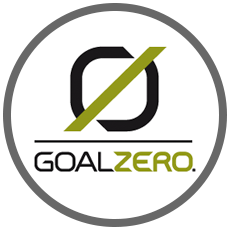

- Portable and most include Wi-Fi capabilities, as well.
- Overall positive reviews on the Goal Zero products.
- Not recommended for radio communications.
- Concerns about the AC inverter not holding up and shorter battery life.
- Configuration is necessary to pair with other brand solar panels.
- Widely available on Amazon, REI, and other retailers.




Inergy Apex
The Inergy Apex Portable Power Station (previously Kodiak) also has positive reviews. The Apex offers a peak 1,500 Watt pure sine wave inverter and 1,100 Watt-hours of peak battery capacity. It’s also lightweight and compact.
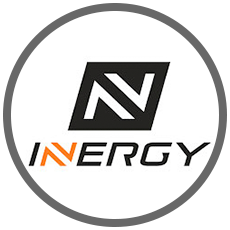

- Portable and lightweight.
- Optional battery expansion option, which is helpful for upgrades and kits.
- Doesn’t support the Neutrik adapter for third party panels.
- 500 Watt max output.
- Reliable and durable according to reviews.
- The LCD screen is easy to read.
- Quiet operation.




When it comes to solar generators, my biggest word of advice is to manage your expectations. You aren’t going to be able to run your refrigerator, blender, microwave, and television on a solar generator. It’s not going to happen. You can, however, use a solar generator to learn how solar works. It can help you get used to the quirks of relying on solar power before you scale up to a full system.
Solar generators are great for camping, charging tools, and for hobbyists. If solar energy is something that interests you and you don’t know where to start, solar powered generators are a cool option to explore.
Your Turn!
- Have you ever used a portable solar generator?
- What would you like to power with a solar generator?


From what I have seen, some of them are well built and properly sized. All of them are overpriced.
When you look at running a fridge on solar you can check out how sailers put fridges on their sailboats. We had a fridge on our boat which ran at 4 amps. Of course, it had 8 inches of insulation all around it and the fridge part was only about 2 cubic feet. We were able to run it all the time based on 3 300 watt solar panels. For those who need to live off grid, having a super insulated fridge is much better than not having anything.
I should add that when possible you should run things directly off of the batteries. Inverters are great but cause a big efficiency loss. You can charge phones and ipads from 12v batteries by using the car charger adapters you can purchase. Also consider doing 12v LED lighting. You get massive light for just a sip of electricity.
HI Ryan, How are you? I really like your site. I have been in the solar and lithium battery business for the past 22 years. I have come up with a system that I think will work for many of your listeners. I have lithium companies in Asia and solar companies in France where I can get products for true factory prices. Please take a look at my site and see if there are ways that we can work together. I found that by making the battery bank scalable up to 10,000 watts makes it practical for many users. They can start with a simple 320 watt panel and one 2400 battery bank. The inverter and controller are all designed to handle max load up to 10,000 wh. Let me know if we can talk on the phone for a few moments. 801-231-5541 or go to my web site www.splitrocksolar.com
I have a PowerSource 1800 Solar generator that we got for emergencies. Do you know anyone in the San Antonio area that might look at it? We never really used it but charged it and I need to know if it’s worth keeping. It’s large and cumbersome and about 20 years old.
can you connect more than one solar panel together for a faster charge of the batter/generator? And if you can what is needed to daisy chain the panels together?
I am not sure when this article was written but my portable will power a full size refridge for 12hrs on its battery. Also can power it while charging from the panels.
I don’t know if this question is allowed. I’m only interested in a portable emergency power outage and possibly camping use product. I know nothing about these products and don’t understand a lot of the technical language,. I get ads on my phone for these brands, 4Patriots and General. Are you familiar with them